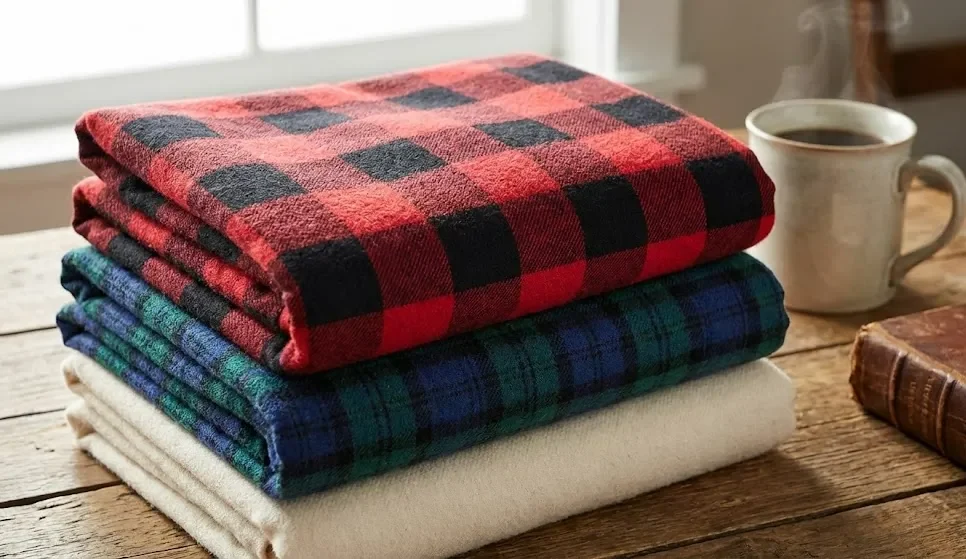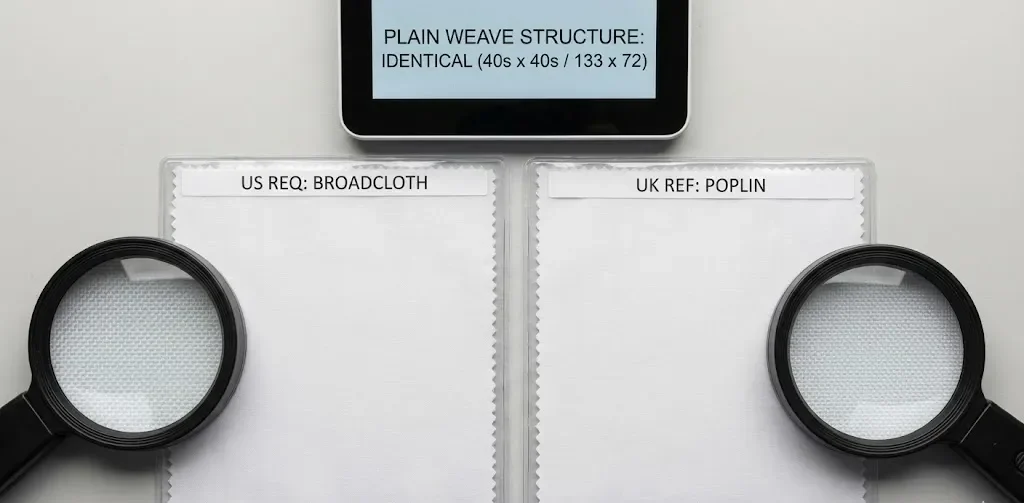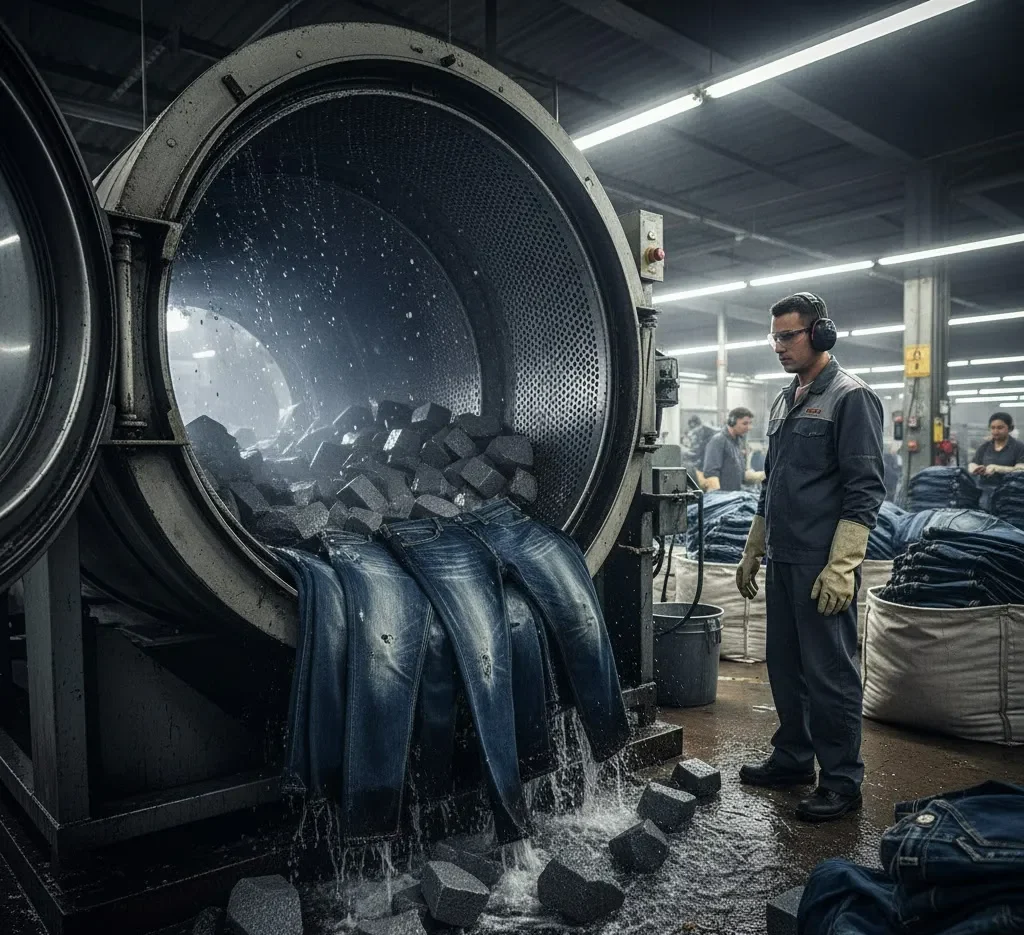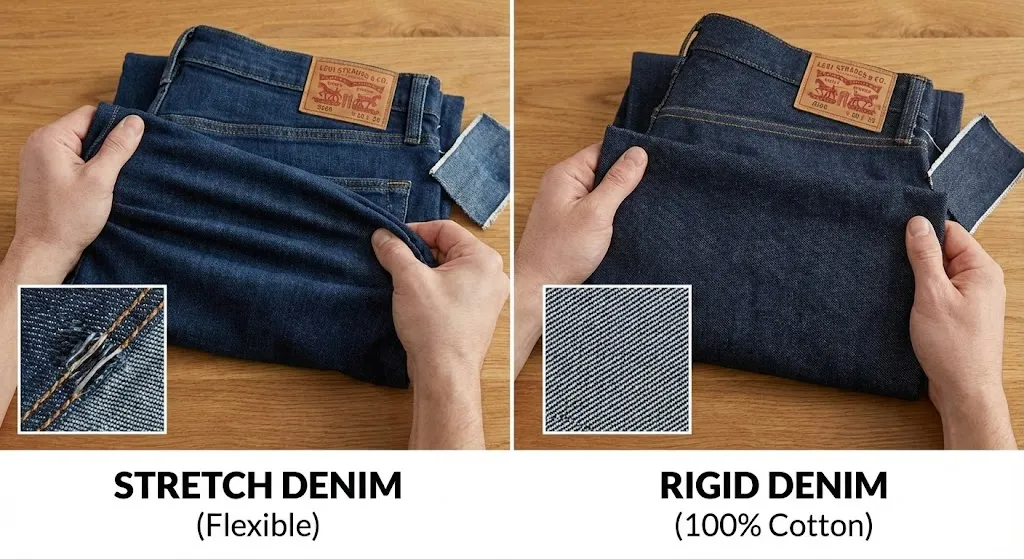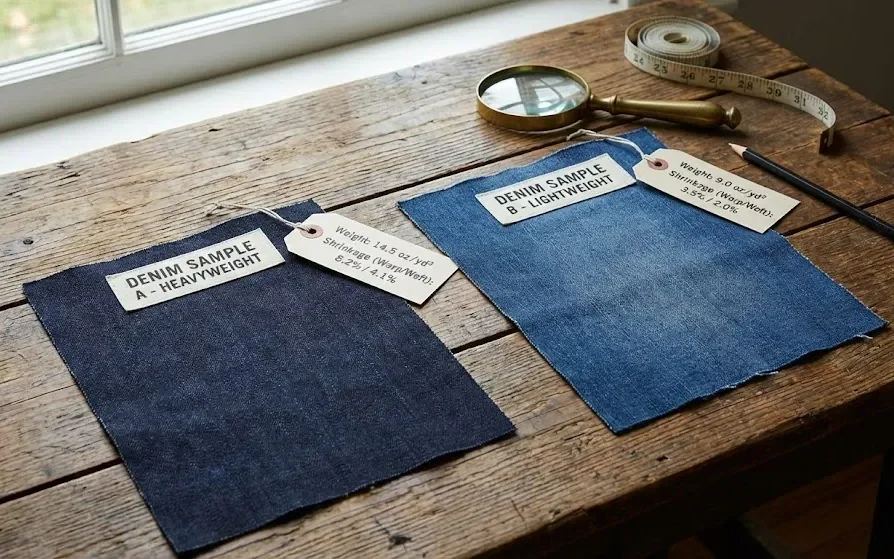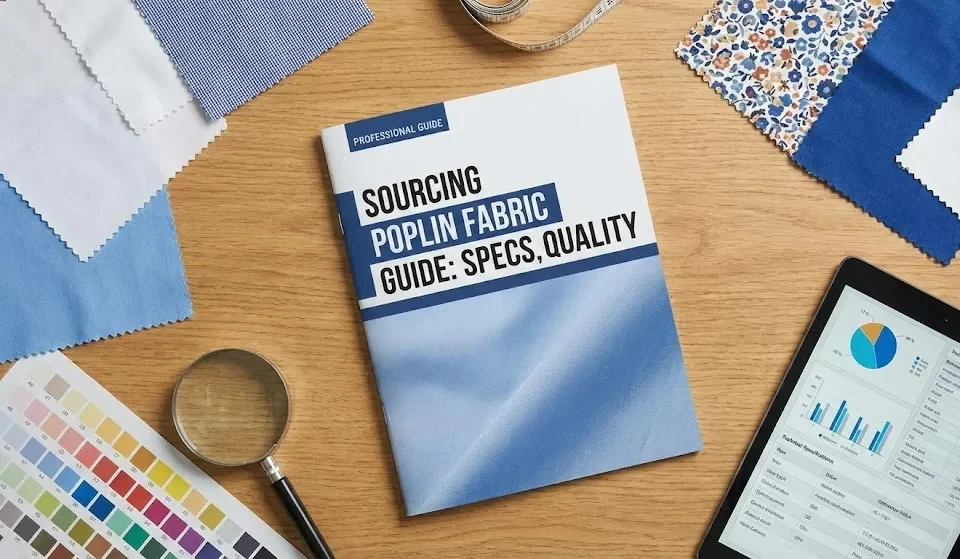What Is Denim?
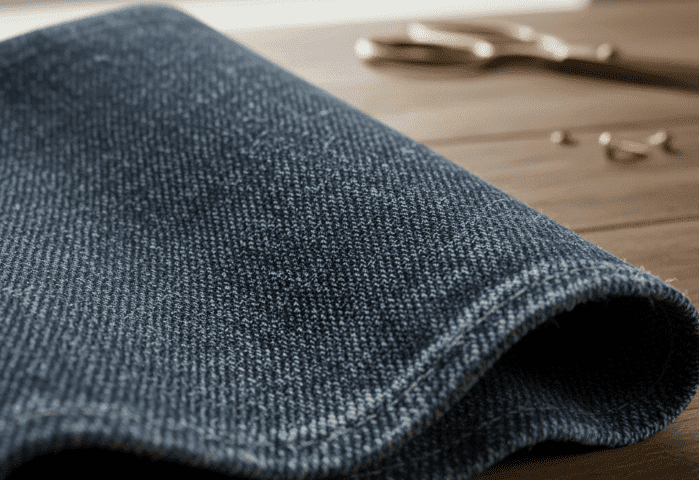
Denim is a sturdy, durable fabric woven from cotton yarn, with a blue top and a white base. It’s the fabric specifically made for jeans, woven with a specific construction that gives it its signature look and feel.
Let’s break down its two most fundamental properties:
Is denim pure cotton?
Denim is 100% Pure cotton. This gives it its strength, breathability, and the ability to age beautifully. However, modern denim often incorporates a small percentage (usually 1-3%) of elastane (spandex) to create stretch denim, which offers enhanced comfort and flexibility. But the heart and soul of the fabric remain cotton.
Is denim woven or knit?
Denim is a woven fabric. Its identity is defined by a specific type of weave called twill.
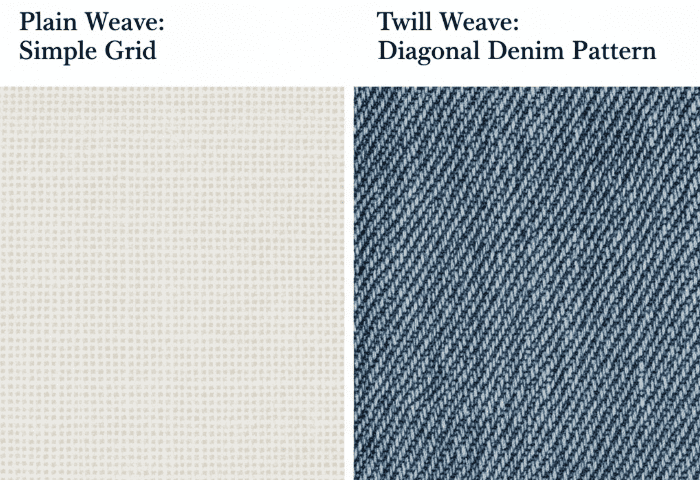
You can think of it as a simple mesh, with yarns arranged layer by layer – this is the plain weave. The denim weave is different. The weft (horizontal) thread passes under two or more warp (vertical) threads. This process is shifted over by one thread in each row, which creates the characteristic diagonal lines, or twill lines, you can see on the surface of your jeans.
This construction is what makes denim significantly stronger and more durable than a plain-weave cotton fabric of the same weight.
The Special Dyeing Process of Denim
As I mentioned earlier, denim’s outer fabric is blue, while its base is white. This isn’t accidental; it’s the result of a very special dyeing process: indigo dye.
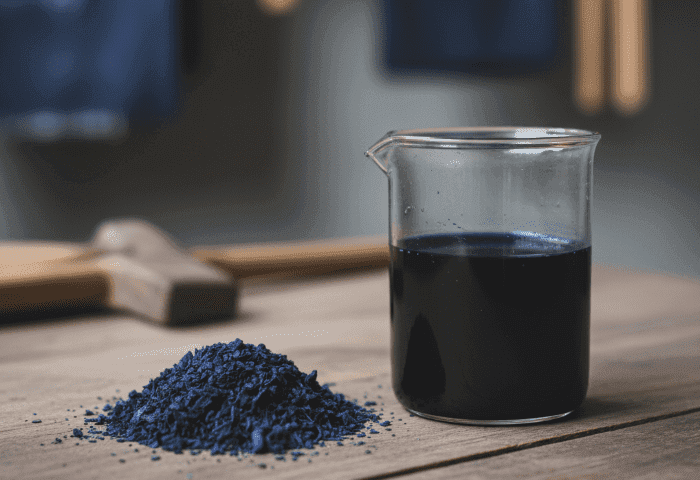
The Technique: Ring Dyeing
Unlike other dyes that penetrate deep into the cotton fiber, indigo dye primarily adheres to the surface of the yarn. This technique, known as “ring dyeing,” leaves the core of the yarn white.
The Result: A Personal “Patina”
This creates a unique effect: as you wear and wash your jeans, the outer layer of indigo dye gradually chips away through abrasion, slowly revealing the white core underneath. This process creates the personal fading patterns—or “patina“—that make each pair of jeans unique.
This answers the common question of how to stop denim from bleeding: initial bleeding is a natural and expected characteristic of authentic indigo-dyed denim.
Overview of Denim Types
The world of denim is vast. Understanding the basic types of denim is crucial for any buyer.
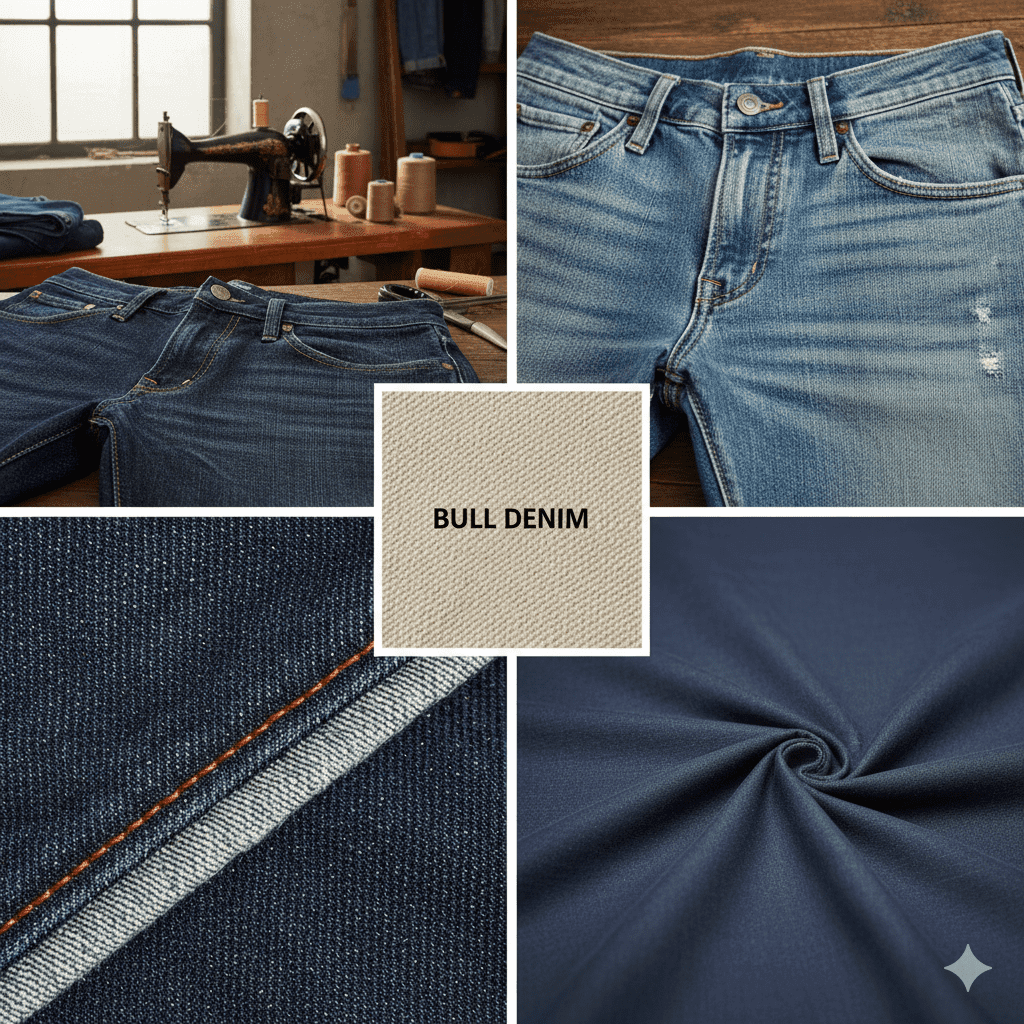
Raw Denim (Dry Denim)
This is denim in its purest, unwashed state. It is stiff and deeply colored. Denim enthusiasts prefer raw denim because it allows them to create their own unique fading patterns through wear.
Washed Denim
This is denim that has been washed and treated by the manufacturer to achieve a specific look and feel. This includes light wash denim and dark wash denim, as well as various distressing techniques.
Selvedge Denim
This refers to denim woven on old-fashioned shuttle looms. The fabric has a clean, tightly woven edge (a “self-edge,” hence the name) that prevents unraveling. Selvedge denim material is a hallmark of premium, heritage-style jeans.
Stretch Denim
Denim woven with a small amount of elastane for comfort and a closer fit. It’s the standard for most modern skinny and slim-fit jeans.
Bull Denim
It’s a durable, 3×1 twill construction denim, similar to standard denim, but the key difference is that the fabric is piece-dyed after weaving, resulting in a solid color on both sides. It’s often used for upholstery and workwear.
Common Uses of Denim
Thanks to its versatility and durability, denim is used across a wide range of products.
Classic Jeans and Denim Jacket
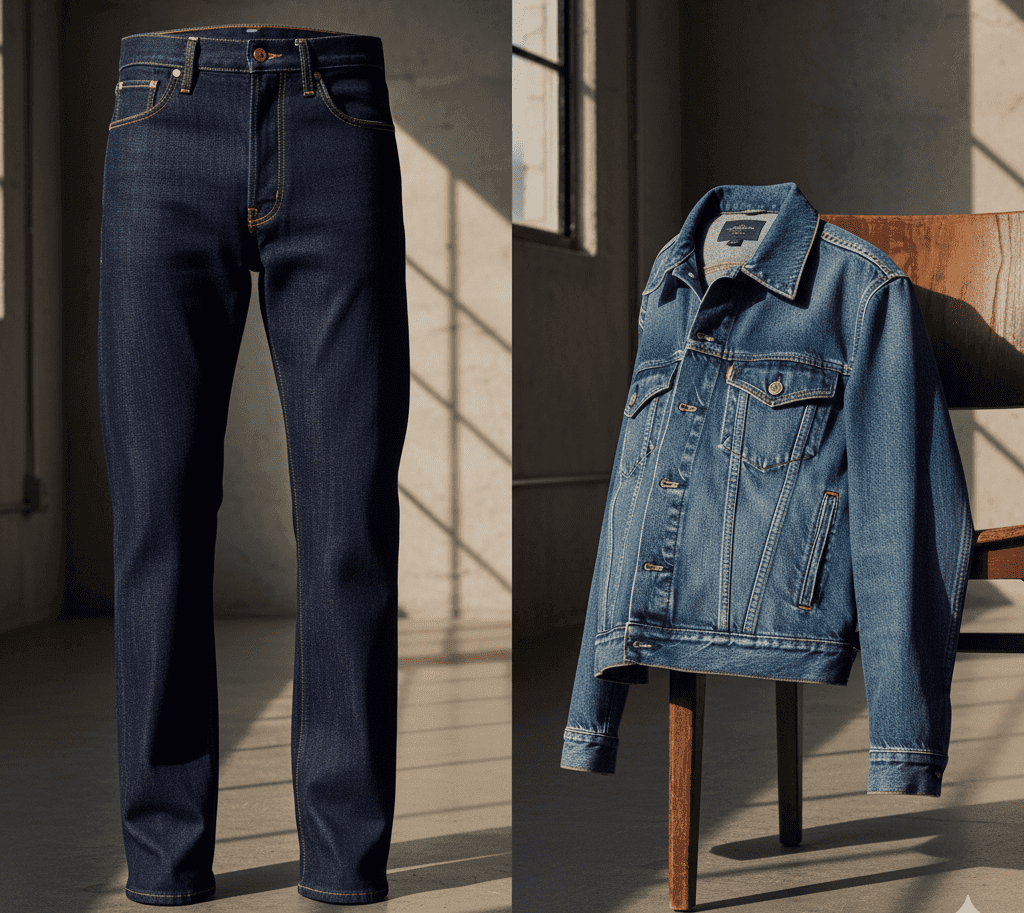
The most iconic use. The fabric’s strength makes it perfect for hard-wearing everyday garments.
Denim Shirts and Denim Dresses
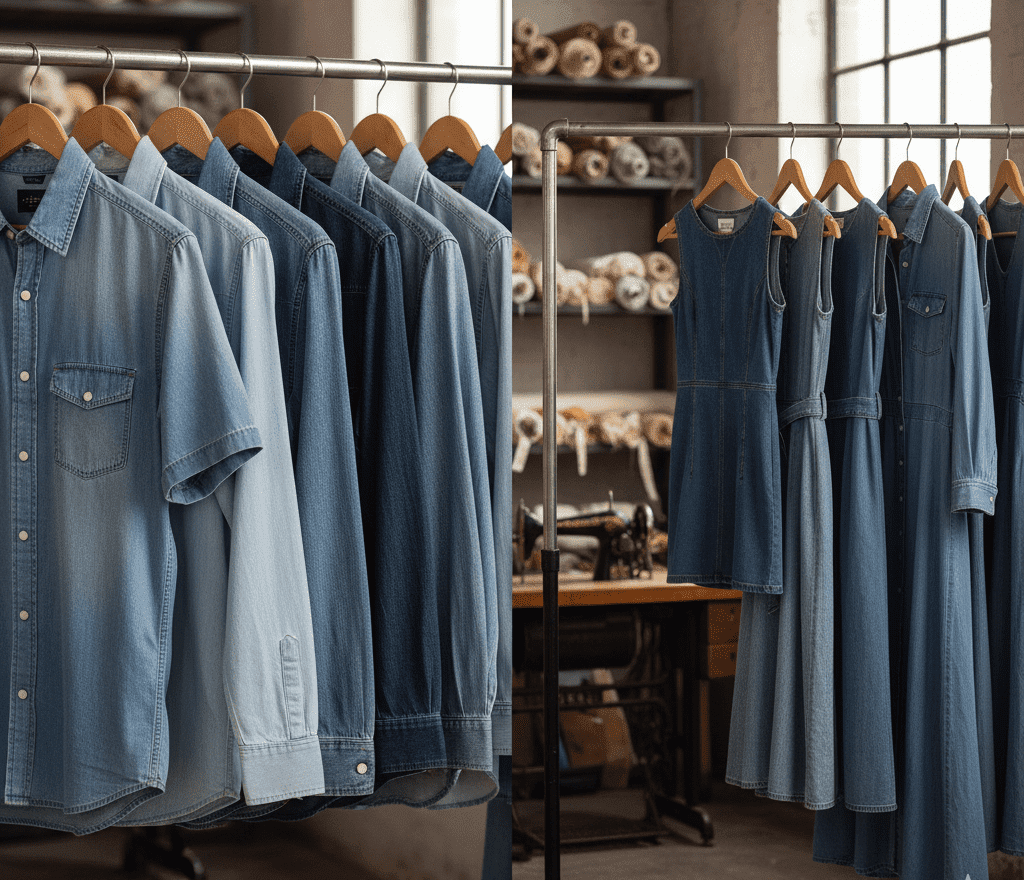
Lighter-weight denims (under 12oz) are used to create comfortable and stylish shirts and dresses that offer a more relaxed alternative to poplin or twill.
Denim Shorts, Denim Skirts, and Denim Overalls
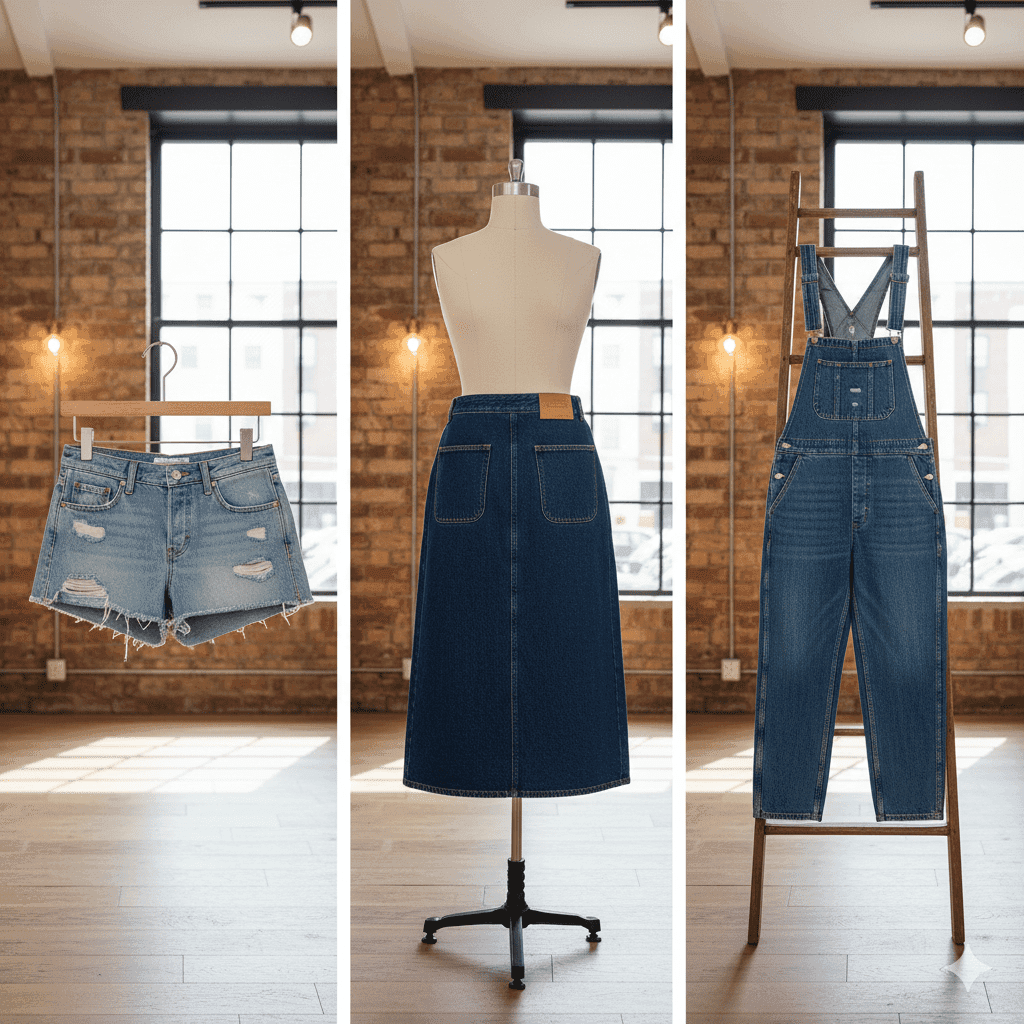
Denim’s durability makes it a natural choice for a wide variety of casual apparel items.
Beyond Apparel
Denim is also used for accessories like bags and hats, as well as for durable home furnishings like upholstery and cushions. You can browse our full collection of denim fabrics here to see the variety.
Sourcing Points: A Quick Start Guide for Buyers
When sourcing denim, two technical specifications are paramount.
Fabric Weight (oz/yd²)
The denim weight explained is simple: it’s the weight of one square yard of fabric in ounces. This is the primary indicator of the fabric’s feel and intended use.
- Lightweight (<12oz): Good for shirts, dresses, and summer jeans.
- Mid-weight (12-16oz): The classic, all-purpose weight for most jeans.
- Heavyweight (16oz+): Thick, rigid, and extremely durable, favored by denim purists.
(For a deeper understanding of how fabric weight is measured, you can refer to international standards like ASTM D3776).
Fiber Content
Is it 100% cotton for a vintage feel, or does it need 1-2% elastane for a stretch skinny jean? This must be clearly specified. For a complete guide on how weight and fiber content interact, see our Fabric Weight & Yarn Count Guide.
Tips for Identifying Quality Denim
When you receive a sample, how do you assess its quality?
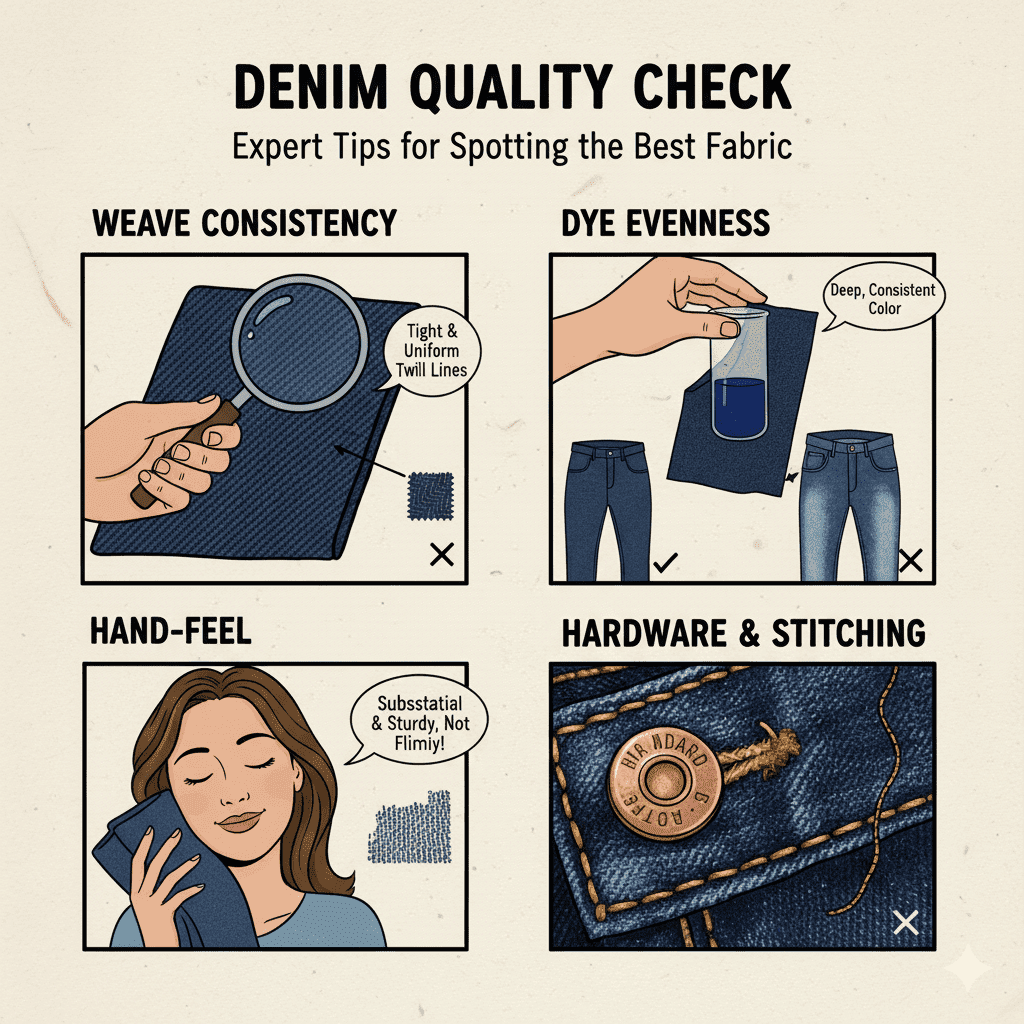
Weave Consistency
Look closely at the diagonal twill lines. They should be uniform and tightly woven, with no visible flaws or knots.
Dye Evenness
For washed denim, the fading and color should look natural and gradated. For raw denim, the indigo color should be deep and consistent across the surface.
Hand-Feel
Quality denim has a substantial, solid feel. Even lighter-weight denim should not feel flimsy or overly soft like a standard cotton twill.
Check the Hardware and Stitching
While not the fabric itself, the quality of the stitching (e.g., chain stitching on the hem) and hardware (rivets, buttons) are often strong indicators of the overall quality level of the garment’s construction.
Answering Your Top Washing Questions
Denim care is a topic of much debate. Here are direct answers to the most common questions.
Does denim shrink?
Yes, 100% cotton denim will shrink, especially on the first wash. “Sanforized” denim is pre-shrunk at the factory to minimize this (usually to about 1-3%). Unsanforized raw denim can shrink up to 10%, which buyers must account for when sizing.
How to wash raw denim?
For the first wash, most experts recommend soaking the jeans inside-out in cold water for about an hour, then hanging them to drip dry. This removes starch and starts the fading process gently. Subsequent washes should be infrequent, in cold water, and always hung to dry.
How to stop denim from bleeding?
As mentioned before, you can’t completely stop new, dark indigo denim from bleeding, as it’s a natural characteristic. However, you can minimize it by always washing it inside-out with other dark colors in cold water.
Pro Tip: Soaking it in a mixture of cold water and a cup of white vinegar before the first wash can also help set the dye.
What are the main global denim production centers?
While denim is produced globally, a few regions are renowned for their specific expertise:
China: The world’s largest producer, recognized for its immense scale, complete vertical supply chain (from cotton to garment), and competitive pricing. Key production areas like Guangdong (Xintang) and Shandong are massive hubs for global denim manufacturing.
Japan: Famous for its artisanal, small-batch selvedge denim, particularly from the Okayama prefecture.
Italy: Known for its innovative, high-fashion washes, finishes, and stretch denim technologies.
USA: The historic home of denim, particularly known for heritage brands and production in states like North Carolina and California.
Turkey: A major hub for large-scale, high-quality denim production with a focus on sustainable technologies and finishing.
- Tips:(For more on the history of denim, you can explore resources from cultural institutions like the Smithsonian National Museum of American History).
Conclusion
What is denim? It’s more than just a sturdy cotton fabric; it’s a unique textile defined by its durable twill weave and its living indigo dye. It’s a canvas that records the life of its wearer, with every fade and crease telling a story. Understanding its core properties is the first step for any designer or brand looking to harness the power of this truly iconic material.
If you have questions about sourcing the right denim for your collection, please don’t hesitate to reach out.
Frequently Asked Questions (FAQ)
Q1: What’s the difference between denim and chambray?
They can look similar, but the weave is different. Denim is a twill weave with a diagonal texture and a lighter-colored underside. Chambray uses a simpler plain weave, giving it a smoother, flatter surface and a lighter feel. It is often used for “denim-look” shirts.
Q2: Why is selvedge denim more expensive?
Selvedge denim is woven on older, slower, and narrower shuttle looms. This process is less efficient but produces a denser, higher-quality fabric with a finished edge that won’t fray. The cost reflects the vintage machinery, the slower production process, and the superior quality of the final product.
Q3: What does ‘denim wash’ mean?
A denim wash refers to the finishing process a pair of jeans goes through after being constructed. This can include simple rinsing, stone washing (for a worn-in look), acid washing (for a mottled look), or applying enzymes to soften the fabric and create specific fading patterns like ‘whiskers.’ Raw denim has no wash.


